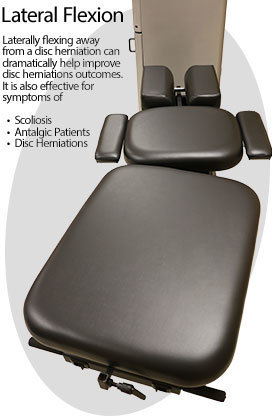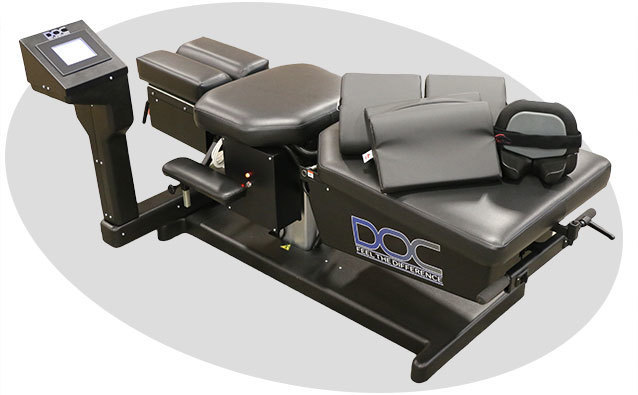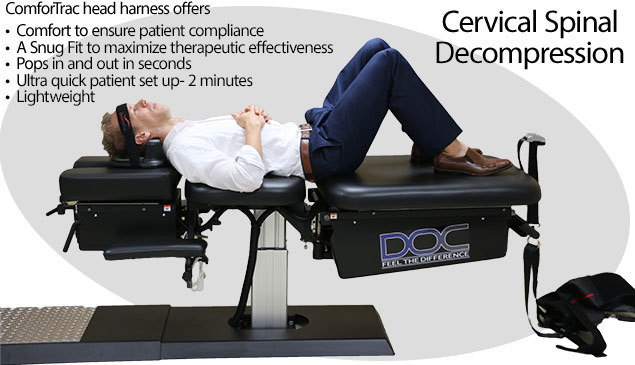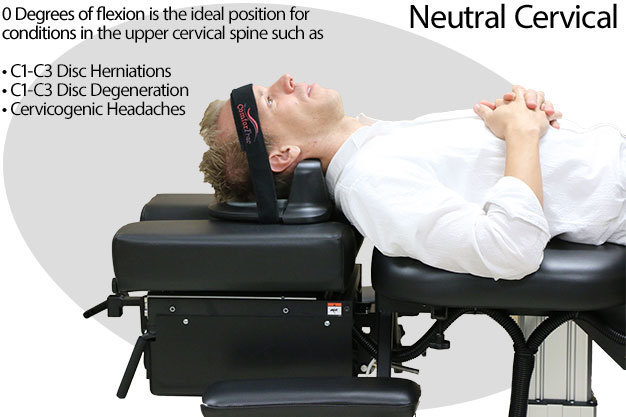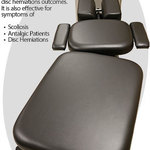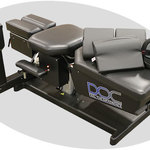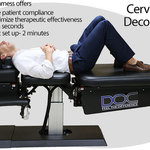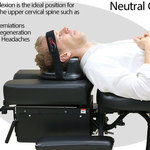What Is Spinal Decompression?
Decompression Therapy is a non-invasive, non surgical treatment to apply significant distractive forces to the spine in variable directions creating a negative pressure in the centre of the intervetebral disc. This creates a suctioning effect or vacuum phenomenon in order to retract and reduce the size of a herniated or bulging disc's gelatinous internal nucleus pulposus, thus eliminating or decreasing significantly nerve compression. This will also create an osmotic gradient which helps bring nutrients and water into the disc, thus stimulating the healing process. Since intervetebral discs have poor circulation, they depend upon receiving their nutrition through diffusion.
How Is It Different From Traction?
Spinal decompression therapy is essentially the evolution of traction. However, pain relief with traction was inconsistent and often short lived. Decompression therapy treatment is carefully controlled by a computer to ensure both safety and highly specialized treatment while traction applies a general force. Specific vertebral targeting makes applying the most force to the desired segment.
This allows for an increased build up of negative pressure, in turn providing a vacuum effect on the bulging or herniated disc. A feedback based computer algorithm allows for the decompression to overcome the body's natural tendency to guard against the pull of the decompression table allowing for significant forces reaching the target area.
What Type Of Table Do You Use?
The type of table used is very important in the outcome of treatment. The more dynamic a table is in 3 dimensional positioning, pull and release protocols, and targeting of specific discs - the more chance of success. There are many decompression tables, each with their own unique characteristics. Each manufacturer claims their product is superior to the competition. Current decompression tables that are in use include Vax-d, DRS, DRX9000, Acu-Spina, Kennedy Decompression Tables, Lordex, Spine-Med to name a few. Each of these tables offer decompression therapy is some form or another.
There are some tables that are marketed as decompression tables yet are traction devices. This has happened due to loose wording in FDA classification of decompression, so buyer beware. Treatment on a traction table that is labeled as decompression will not give you the same benefit as a decompression table.
We use the DOC System and in our opinion, it is the most-state-of-the-art Spinal Decompression treatment available with its advanced computer control and more compact 21st century design.
Using the digital command centre, the DOC System is capable of specific vertebral targeting. This allows our practitioners to focus primarily on the patient's problem area(s) rather than the general area like most tables. The DOC System also allows for separate lumbar and cervical decompression programming and continuous readout and graphing of treatment protocols.
Using Reflex Auto Monitoring Program the DOC System automatically checks, rechecks and monitors the program time, active poundage, resting poundage and hold/relax time. This ensures that each patient receives the treatment they need.
The DOC System provides articulating decompression, defined as decompression that can vary the posture of the spinal column during the treatment. This means the practitioner is able to strategically position the spine into a variety of postures to make the treatment more effective. Basic linear decompression systems cannot. This posturing improves how the therapy moves through the spine. It enables the decompression to reach into areas of the injury that the "older systems" miss.
This articulation can improve the range-of-motion as it continues to make the joints healthier. The spine has many ranges-of-motion. They include flexion (bending forward), extension (bending backward), lateral flexion (bending side to side) and most important, rotation. A healthy spine must seamlessly move through all of these motions without pain. Anything less may be due to an injury or may be a pre-cursor to injury. Damage to back or neck muscles as well as spinal alignment issues can limit our spines' ability to move. Limited or painful movement indicates the need for treatment.
Lastly, the DOC System can adjust and vary the "holding times" of its pull and release cycling. Different holding times effect different tissues. For example longer holding times effect the disc while shorter times effect muscle and tendon. Other systems are limited to one pattern.
By using computers to control and modify the characteristics of the pull-release cycling, traditional traction evolved into decompression. The DOC System evolved decompression even further with its unique articulation features. It has more treatment options and is more advanced than any other system in the world.
Contact Us Today!
If you have been injured as a result of an auto accident, we encourage you to contact us today. Even if you don't feel any pain right away, it is still highly recommended to be evaluated by our team!
